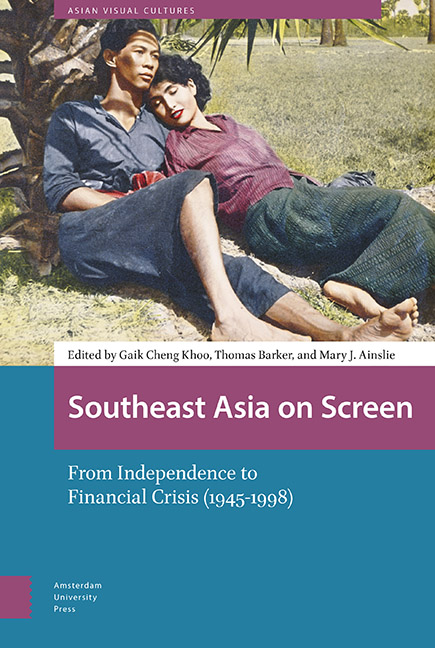Book contents
- Frontmatter
- Contents
- List of Illustrations
- Introduction: Southeast Asia on Screen: From Independence to Financial Crisis (1945–1998)
- Section 1 Independence and Post-World War II Filmmaking: Nation-building, Modernity and Golden Eras
- Section 2 Key Directors
- Section 3 Popular Pleasures
- About the Authors
- Index
4 - Gender, Nation and Spatial Mobility in on Top of the Wave, on Top of the Wind
Published online by Cambridge University Press: 20 November 2020
- Frontmatter
- Contents
- List of Illustrations
- Introduction: Southeast Asia on Screen: From Independence to Financial Crisis (1945–1998)
- Section 1 Independence and Post-World War II Filmmaking: Nation-building, Modernity and Golden Eras
- Section 2 Key Directors
- Section 3 Popular Pleasures
- About the Authors
- Index
Summary
Abstract
This chapter examines women's mobility as presented in Vietnamese revolutionary cinema in its heyday following the Gulf of Tonkin incident (in 1964). Focusing on Ngọc Quỳnh's On Top of the Wave, on Top of the Wind, it argues that this film offers a timely reflection upon the reality of fighting and the labour of the Vietnamese people in the American War. Through the film's spatial narrative and visuality of cultural and physical geography, the filmmaker conflates nation and home, blurring the separation of domestic and public spaces and creating a national/ familial space for both sexes. Yet while this narrative invokes patriotism and mobilizes women's participation in the national struggle, it also limits women's agency and subjectivity after the war.
Keywords: Vietnamese war documentaries, women and war, spatial mobility, gender and nation, and socialist cinema
On 2 August 1964, President Johnson reported that the North Vietnamese attacked US boats in the Gulf of Tonkin, triggering expanded US involvement in the Vietnam War. To punish the Việt Minh and curtail the increasing reputation of revolutionary forces in the South, President Johnson quickly launched a siege named Operation Rolling Thunder, which stretched from early 1965 to late 1968. This incursion, unlike most previous sieges, took advantage of high-tech US Air Force equipment to devastatingly drop bombs throughout the North. In response, Hồ Chí Minh publicly called for the whole country to rise up against US imperialism in 1966. Echoing the national struggle against the US Army, documentaries and newsreels were produced to mobilize the people for the ‘sacred resistance against Americans in Vietnam’ (Cuộc kháng chiến chống Mỹ thần thánh). Engaging with the Gulf of Tonkin incident, Ngọc Quỳnh's ĐẦU SÓNG NGỌN GIÓ (ON TOP OF THE WAVE, ON TOP OF THE WIND, 1967) weaves together a story about an island (in an unidentified location in North Vietnam) and its role against the US forces with a theme of women's changing roles. The film documents the process of women's transformation cinematically portrayed as a journey of women leaving private spaces for entry into the public realm.
- Type
- Chapter
- Information
- Southeast Asia on ScreenFrom Independence to Financial Crisis (1945–1998), pp. 93 - 110Publisher: Amsterdam University PressPrint publication year: 2020



